The military profession today is a matter of nationality. Modern-era soldiers spend their careers serving the country of their citizenship. It wasn’t always that way. In centuries past the international brotherhood of arms was almost a nationality in itself. Highly skilled professional officers routinely crossed national borders to offer their services where political or religious convictions took them—or where pay was better.
Even by the standards of those earlier times Germany’s Frederick Schomberg had a breathtakingly diverse military career, including service in six different armies and high command in five of those. Along the way he became a naturalized citizen of the Netherlands, England, France, Portugal and Brandenburg. He served in eight major wars, and his resume reads like an outline of 17th century military history.
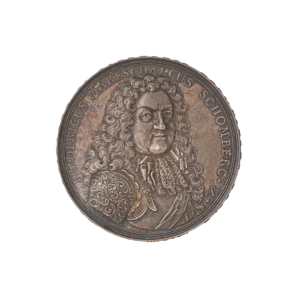
Schomberg was born Friedrich Hermann von Schönberg in Heidelberg on Dec. 6, 1615, little more than two years before the outbreak of the Thirty Years’ War, the religious conflict that killed up to 75 percent of the population of German states. His family was an old and noble one in the Electorate of the Palatinate (corresponding roughly to the present-day state of Rhineland-Pfalz). The Schönbergs were Calvinist Protestants. Friedrich was the only child of Count Hans Meinhard von Schönberg, a Palatinate marshal and courtier.
His English mother, Anne, was the daughter of Edward Sutton, the 5th Baron Dudley. Friedrich, however, was orphaned before he was a year old and raised by his grandmother. His education was sponsored by family friends, including the elector of the Palatinate, Friedrich V—the “Winter King” of Bohemia, over whom the Thirty Years’ War started.
In 1633, at age 17, Schönberg joined the army of Prince Frederick Henry of Orange and participated in the siege of Rheinberg amid the 1568–1648 Eighty Years’ War. The following year he joined the Swedish army in Germany and served in the Thirty Years’ War on the Protestant side. In 1635 he purchased a commission as a company commander of German infantry in the French army. A year later he fought at the siege of Dôle. In March 1637, at age 21, he led an unsuccessful attempt to relieve the siege of the Rhine River fortress at Ehrenbreitstein, then led a force of some 8,000 German troops into East Friesland.
After fighting a duel in which he and his opponent were wounded, Schönberg left military service and withdrew to manage his family estate near Darmstadt. In 1638 he married first cousin Johanna Elisabeth von Schönberg, with whom he would sire six sons, Otto (born 1639), Friedrich (born 1640), Meinhard (born 1641), Heinrich (born 1643), Karl (born 1645) and Wilhelm (born 1647). In 1639 Schönberg rejoined the army of Orange as a lieutenant and served through the 1648 close of the Thirty Years’ War. Appointed a gentleman of the court of William II, Prince of Orange, in 1650, Schönberg supported William’s ultimately failed coup to gain ascendancy over the regents of the United Provinces of the Netherlands. When the prince died suddenly from smallpox that November, Schönberg was forced to flee.
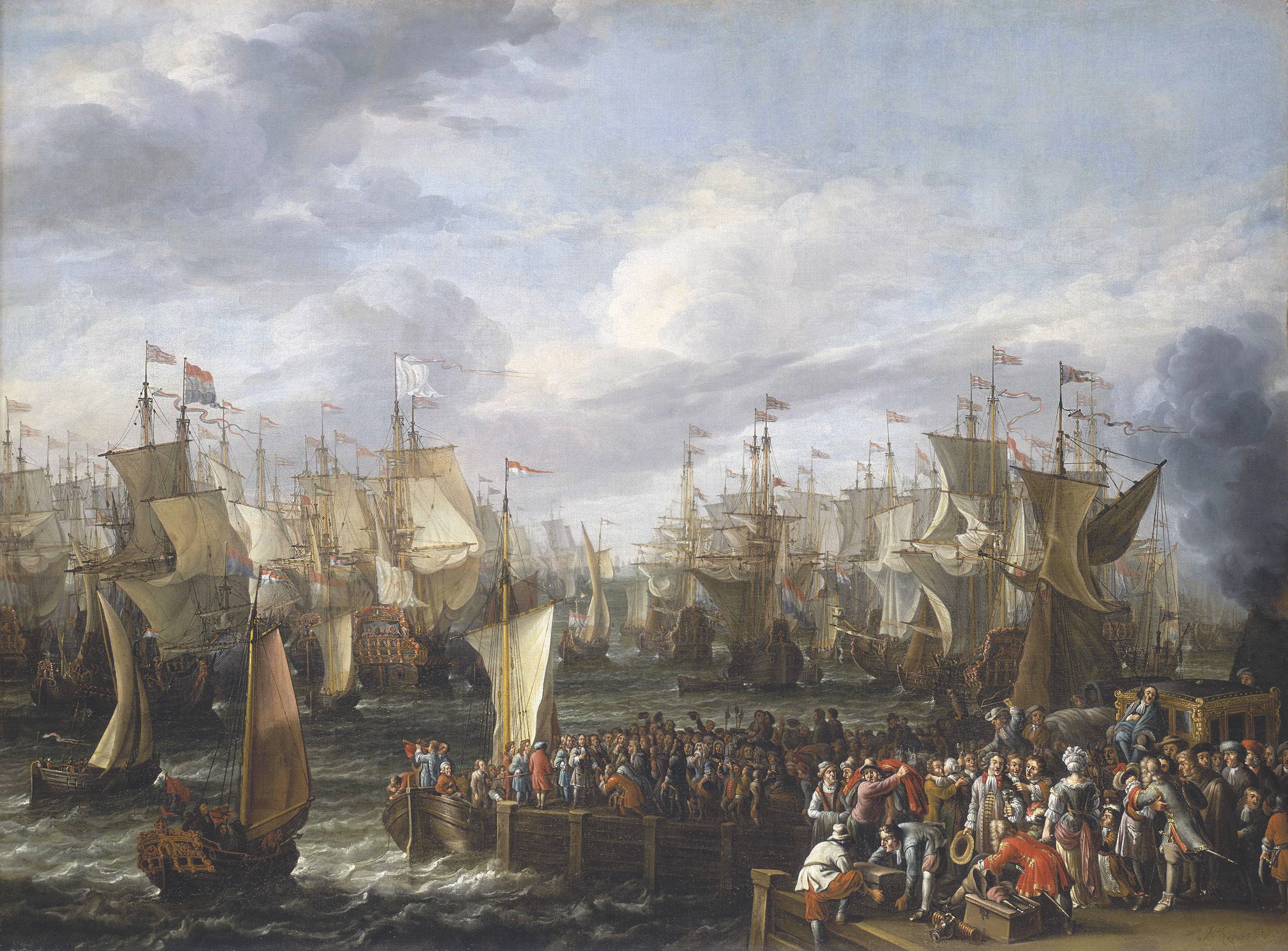
Despite being a Protestant, Schönberg went to France, where he later Gallicized the spelling of his name to Frederick Schomberg. In 1652 he accepted a French army commission as a captain in a unit of Scottish Jacobite expatriates. During the latter part of the 1635–59 Franco-Spanish War, amid the internal Fronde revolts, Schomberg served under Marshal Turenne—Henri de la Tour d’Auvergne, Viscount of Turenne—in the campaigns against Louis II de Bourbon, Prince de Condé.
In 1655 Schomberg was promoted to lieutenant general in the French army, marking an impressive advance in rank over a short period. He participated in the sieges of the fortresses of Condé and Saint-Ghislain and the siege of Valenciennes in 1656, where his 16-year-old son, Otto, was killed in action. Schomberg was serving as governor of Saint-Ghislain in 1657 when a force of 12,000 Spanish troops surrounded the fortress. After a 17-day siege he was forced to surrender to Condé and Don Juan José of Austria, but not before inflicting 2,000 casualties on his enemies during the final seven days of action.
Following the signing of the Treaty of the Pyrenees on Nov. 7, 1659, Turenne and Cardinal Jules Mazarin of France negotiated an appointment for Schomberg as military adviser to Portugal, which since 1640 had been fighting for its independence from Spain in the Portuguese Restoration War. Schomberg’s posting was a covert way for France to exert pressure against Spain. Charles II—the recently restored Stuart king of England—also secretly approved the arrangement.
Arriving in Lisbon in November 1660, Schomberg was assigned command of the Portuguese forces in Alemtejo. During the next several years he fought a series of indecisive battles, handicapped by the incompetence and insubordination of his Portuguese officers, who resented a foreign commander. After forcing a number of tactical and organizational reforms on the Portuguese army, Schomberg won a decisive victory on June 17, 1665, at Monte Claros against the Spaniards under Luis Carrillo, Marquis of Caracena. That battle clinched Portuguese independence, though the opponents did not conclude a formal peace treaty until 1668.
Schomberg’s campaigns in Portugal solidified his reputation as a brilliant military commander. Returning to France in late 1668, the widower (Johanna had died in 1664) became a naturalized French citizen, as did sons Meinhard and Karl (who thereafter went by Charles). In 1669, after purchasing the lordship of Coubert near Paris, 53-year-old Schomberg married Frenchwoman Susanne d’Aumale. Yet despite repeated personal appeals from King Louis XIV, he refused to convert to Roman Catholicism.
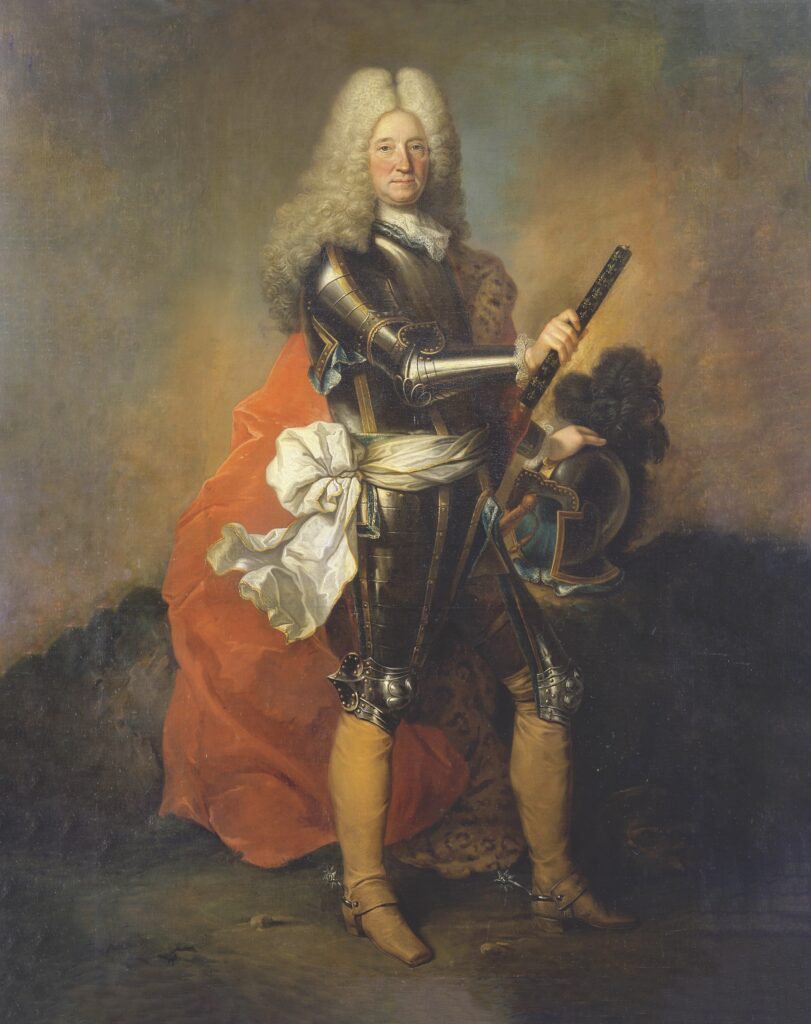
In 1673, amid the 1672–74 Third Anglo-Dutch War, Charles II of England extended Schomberg a commission as a lieutenant general. Serving under Prince Ruprecht of the Rhine, Schomberg was assigned command of the expeditionary force Charles intended to send against the Dutch at Walcheren. The half-English Schomberg arrived in England that summer and assumed command of some 6,000 troops on the coast at Yarmouth, awaiting the outcome of the naval battle off Texel between the Dutch and English navies for control of the English Channel. In the meantime, Schomberg got into a petty protocol squabble with Ruprecht. In November, with the English navy licking its wounds and the invasion called off, Schomberg resigned from English service and returned to his French estate at Coubert.
Louis XIV’s 1672–78 Franco-Dutch War pitted France, England and Sweden against the Dutch Republic, Spain, the Holy Roman empire and the Electorate of Brandenburg and their respective allies. Re-entering French service, Schomberg initially commanded the French army between the Sambre and Meuse rivers. During the winter of 1673–74 he linked up with the forces of François-Henri de Montmorency, Duke of Luxembourg, in the process skillfully outflanking the 24-year-old Prince William III of Orange, whose father and predecessor Schomberg had served so well.
Made a duke in 1674, Schomberg assumed command of all French forces in Roussillon, the slice of Catalonia that France took from Spain under the Treaty of the Pyrenees. When a Spanish force attacked into Roussillon, he intended to fight on the defensive, but his subordinate, Lt. Gen. Alexandre le Bret, attacked against orders and was routed. Schomberg’s son Charles was captured in the debacle. Schomberg remained entrenched at Céret, just outside of Catalonia, and bided his time. In 1675 he forced his way back into Catalonia and that July encircled the fortress of Bellegarde, the key to the region, which surrendered after a 10-day siege.
After Turenne was killed in action on July 27, Louis made Schomberg a marshal of France, despite his continued refusal to convert to Roman Catholicism. In March 1676 Schomberg took command of the French army in Flanders, under Louis’ brother, Philippe I, Duke of Orléans. When William III of Orange besieged Maastricht in the summer of 1676, Schomberg moved to lift the siege.
In May 1677 Schomberg was transferred from Flanders to command a French army of observation on the Meuse. That fall Louis XIV gave Schomberg permission to travel to London to attend the November wedding of Mary Stuart, daughter of the future King James II, to William of Orange, the very prince Schomberg had been battling the previous five years. The Stuarts had long been among Schomberg’s strongest supporters, and a decade later the newlyweds would become William III and Mary II of England.
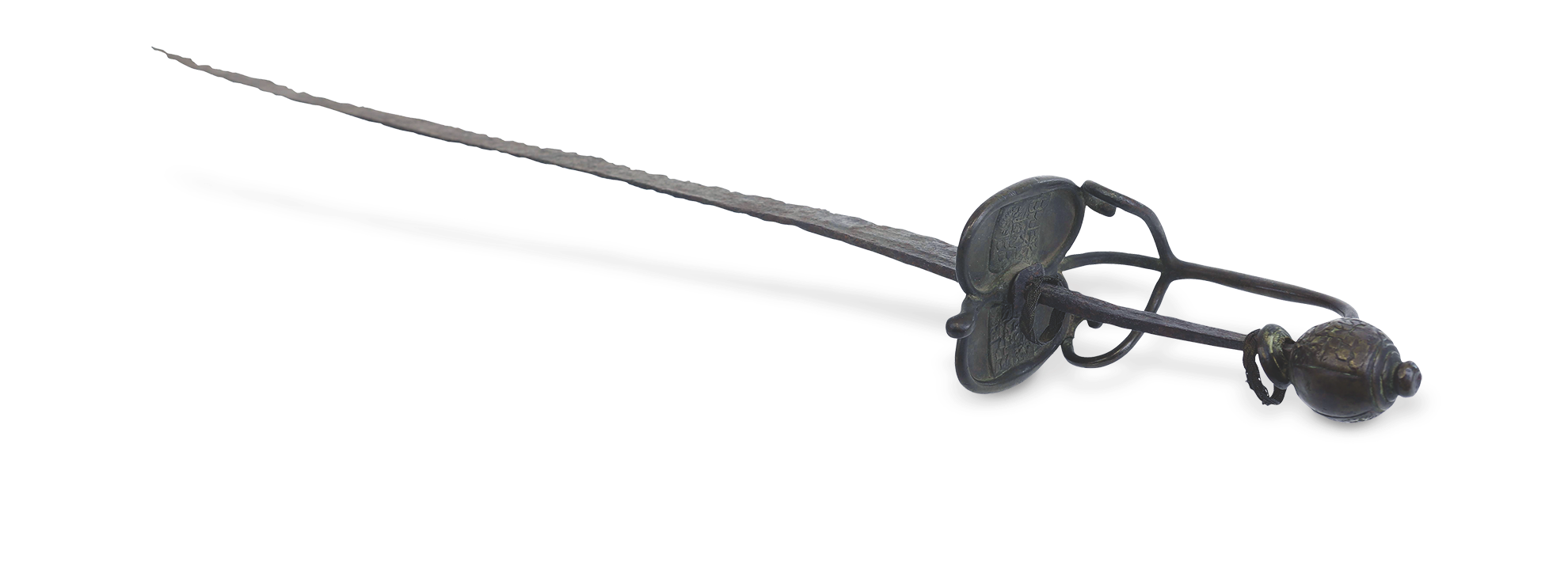
After Schomberg returned to France, the army promoted his son Meinhard to the rank of maréchal-de-camp (roughly equivalent to brigadier general). Both Schombergs participated in the capture of Ghent and Ypres in March 1678, but in July Meinhard was wounded in the head and taken prisoner. That August the signing of the Peace of Nijmegen ended the war, and Meinhard was released. A special article in the treaty guaranteed the interests of the Schomberg family in the Palatinate. In 1679 France also concluded a separate treaty with Sweden, but when the elector of Brandenburg refused to surrender his recent conquests in Pomerania, Schomberg, at the head of 20,000 troops, occupied the Duchy of Cleves, which had been annexed by Brandenburg several years earlier.
In 1680 Louis began to exploit the weakness of his European rivals by establishing French-controlled courts of claims, known as Chambers of Reunion, to determine just which outlying dependencies belonged to the areas France had acquired through the recent peace treaties. The French land grab sparked the brief but brutal 1683–84 War of the Reunions. Louis had claimed Luxembourg, and in June 1684 Schomberg commanded the French army that moved into the duchy. Holy Roman Emperor Leopold I responded by confiscating Schomberg’s lands in the Palatinate. Schomberg then assembled a force of 30,000 in preparation for invading Germany. Under the threat of invasion Leopold and Charles II of Spain agreed to the Truce of Ratisbon, which recognized most of the French acquisitions. Leopold, however, held on to Schomberg’s lands in Germany.
Despite having risen to become a duke and a marshal of France, Schomberg saw his world turned upside down on Oct. 22, 1685, when Louis XIV issued the Edict of Fontainebleau. The royal decree revoked the Edict of Nantes, which in 1598 had granted substantial civil rights to the French Calvinists, known as Huguenots. With a single stroke of the quill Louis had disenfranchised tens of thousands French families, including Schomberg’s. Seven days later Friedrich Wilhelm, the duke of Prussia and Brandenburg’s “Great Elector,” issued the Edict of Potsdam, inviting the dispossessed Huguenots to resettle in his territories. Many jumped at the offer.
Schomberg considered his options. Louis XIV gave him one more opportunity to convert, but the marshal steadfastly refused, and in March 1686 he was dismissed from the French army, albeit with a pension. He was also allowed to retain his estate at Coubert. Schomberg then made his way to Portugal, where he remained in high regard. However, when it became apparent King Pedro II would not offer him a military command, Schomberg sailed for the Netherlands on a Dutch vessel. After consulting with his sometime opponent William of Orange, Schomberg finally accepted the invitation of Friedrich Wilhelm of Brandenburg, yet another former opponent.
On Schomberg’s arrival in Berlin in April 1887, Friedrich Wilhelm made him a privy counselor and appointed him general in chief of the armies of Brandenburg. Schomberg’s son Meinhard also entered Brandenburg service and eventually rose to the rank of general of cavalry (equivalent to a lieutenant general). When the Great Elector died on April 29, 1688, his
son and successor, Friedrich III, reconfirmed Schomberg’s appointments.
At that point the 72-year-old commander and soon-to-be second-time widower was quite willing to live out the rest of his days peacefully in Berlin. But that summer Louis XIV laid claim to the Palatinate and then pushed for a pro-French candidate as elector-archbishop of Cologne. That was too much for the Holy Roman empire. Brandenburg’s new anti-French elector, Friedrich, sent Schomberg with 3,000 troops to occupy Cologne, which he did on September 21. Four days later French troops crossed the Rhine and invaded Germany.
That proved the opening move of the 1688–97 War of the League of Augsburg (or Nine Years’ War), which ultimately pitted France against the Holy Roman empire and Spain and their respective allies. The papacy also supported what became known as the Grand Alliance between England, the Dutch Republic and Austria against France. By late October Schomberg had a strong force on the east bank of the Rhine north of Mainz to check any French advance in that direction. Personally affronted that his former marshal had taken up arms against him, Louis ordered the confiscation of the Coubert estate and the termination of Schomberg’s pension. Louis also pressured the king of Portugal to terminate Schomberg’s Portuguese pension.
William of Orange was one of the principal leaders of the League of Augsburg. Almost as soon as the war started, the Glorious Revolution in England deposed the Stuarts for the second time and ultimately brought William and wife Mary jointly to the throne. James II had been trying to return Roman Catholicism to England, while staunchly Protestant William and Mary had many local supporters across the channel. Since the death of the Great Elector, William had also been secretly recruiting Schomberg. With his primary sources of income cut off, the veteran commander did come over to William, with the full backing of Brandenburg’s Friedrich. In doing so, Schomberg again found himself taking up arms against former patrons and supporters—this time the Stuarts.
On Nov. 5, 1688, the Prince of Orange, with Schomberg as his second-in-command, landed at Torbay on the southern English coast. Their force comprised some 21,000 troops, including 6,000 Schomberg brought with him from Brandenburg. Within weeks English commanders John Churchill and Henry FitzRoy, Duke of Grafton, had defected to William. In December James II fled to France, and William entered London. The Stuarts were not yet finished, however. With strong support from cousin Louis XIV, James landed in Kinsale, Ireland, on March 12, 1689, backed by a small Anglo-French army. Largely Catholic southern Ireland had raised an army to support his restoration and gave him a warm welcome.
After William III and Mary II of England were crowned on April 11, Schomberg was well rewarded for his support. He was naturalized as an English citizen, made a Knight of the Garter and appointed master general of the ordnance. The latter appointment put him at serious odds with Churchill, who thought William owed him the job. In May Schomberg was created Baron Teyes, Earl of Brentford, Marquis of Harwich and Duke of Schomberg in the English peerage. Parliament also voted him £100,000 in compensation for the loss of his French estates.
In order to consolidate William III’s hold on all of Britain, James II had to be driven out of Ireland. On Aug. 13, 1689, Schomberg, at the head of 10,000 men, landed at Bangor Bay in Protestant Northern Ireland, which had been secured by pro-William forces two weeks earlier at the Battle of Newtownbutler. By month’s end Protestant recruits would double his force. Schomberg soon occupied Belfast, then moved on the Jacobite garrison at Carrickfergus. After capturing the castle and town, he headed south to Dundalk, just over the Ulster–Leinster border. At Dundalk, however, an epidemic of typhoid and dysentery broke out among his raw and largely undisciplined troops. Withdrawing north into Ulster, he went into winter quarters.
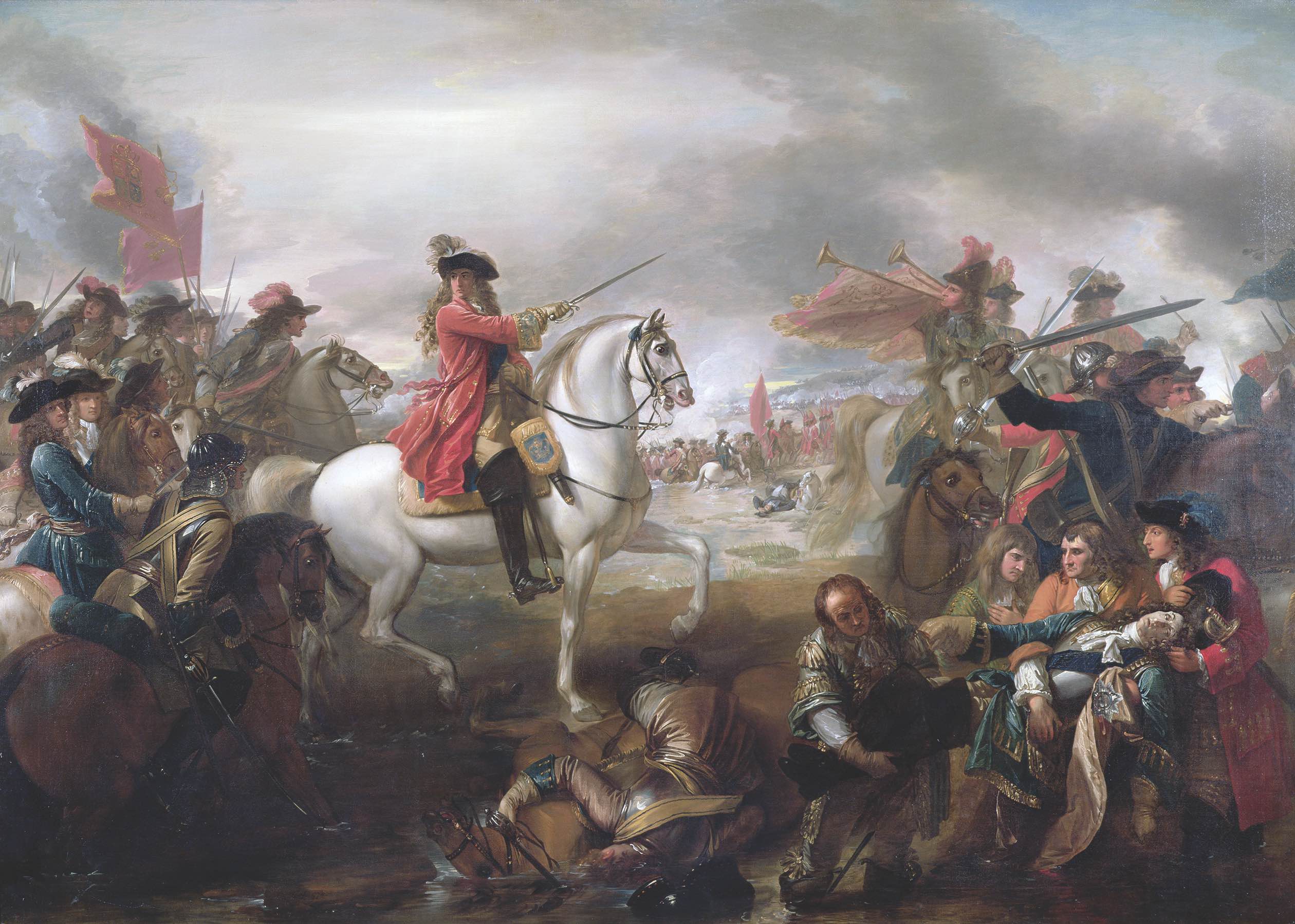
In April 1690 Schomberg led his remaining forces against Charlemont, capturing the town in about three weeks. William III, meanwhile, landed at Carrickfergus on June 14 with 16,000 fresh troops. Assuming personal command, William immediately pushed south with a combined army of 36,000. While Schomberg remained his second-in-command, William had lost a great deal of confidence in his old warhorse due to the debacle at Dundalk. Meanwhile, Jacobite forces of about 23,500 entrenched along the south bank of the River Boyne, the only defensible line north of Dublin.
William’s army reached the Boyne on June 29. The following day William himself was slightly wounded while reconnoitering fords along the river. Late that night he held a council of war. Schomberg was very ill but left his sickbed to attend. He counseled caution and recommended a wide flanking movement, rather than a direct attack across the river. William overruled him. Tired and despondent, the ailing marshal returned to his tent.
On the morning of July 1 William sent about a quarter of his force under Schomberg’s son Meinhard on a feint to the west at Roughgrange. To meet the perceived threat, an inexperienced James sent nearly half his men and most of his artillery. The elder Schomberg then spearheaded William’s main attack in the center across the ford at Oldbridge. Once on the south bank Schomberg directed the deployment of crossing infantry. As William’s infantry formed up on the south bank, however, a Jacobite cavalry force broke through and surrounded Schomberg’s party. After receiving two saber wounds, Schomberg took a carbine round to the back and was killed instantly. Most of his staff died with him.
Despite the death of their second-in-command, William’s forces prevailed at the Battle of the Boyne. As William entered Dublin unopposed, the Jacobite forces withdrew to Limerick. Shortly thereafter James again fled to France, never to return, although it took William until October 1691 to finally secure all of Ireland. Meinhard Schomberg continued serving in the English army as a general of horse, was created Duke of Leinster in 1692 and became a naturalized English citizen. When brother Charles was killed in Italy in 1693, Meinhard succeeded to his father’s English title as 3rd Duke of Schomberg.
At the time the Battle of the Boyne was not perceived as a great victory. Overshadowing it was the French defeat of the Anglo-Dutch fleet at Beachy Head nine days later amid the broader war. Ironically, Continental observers considered the victory on the Boyne the first significant win for the League of Augsburg—the first important alliance between the papacy and many key Protestant powers of Europe. Indeed, the victory inspired other nations to join the Grand Alliance against France.
As for Schomberg, he was entombed in the Protestant St. Patrick’s Cathedral in Dublin. British author Daniel Defoe paid tribute to him in a 1701 satirical paean to William III entitled The True-Born Englishman. It reads in part:
Schomberg, the ablest soldier of his age,
With great Nassau did in our cause engage:
Both join’d for England’s rescue and defense,
The greatest captain and the greatest prince.
With what applause his stories did we tell?
Stories which Europe’s volumes largely swell.
